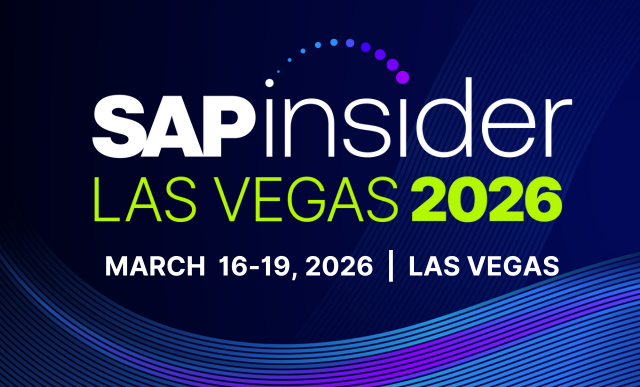SAP SRM
Filter By
Browse By
- SAP Analytics and AI
- SAP Application Development and Integration
- All SAP Application Development and Integration
- SAP ABAP
- SAP ABAP Development Tools
- SAP ABAP Test Cockpit
- SAP API Management
- SAP BAPI
- SAP Basis
- SAP BRF
- SAP Business Application Studio
- SAP CMS
- SAP Design Studio
- SAP Development Tools
- SAP DevOps
- SAP EAI
- SAP EDI
- SAP Extension Suite
- SAP Fiori
- SAP Fiori Elements
- SAP Integration Suite
- SAP Low Code Application Development
- SAP Low Code Automation
- SAP Netweaver
- SAP Release Management
- SAP UI5
- SAP Web Application Server
- SAP Web IDE
- SAP Business Process Management
- SAP Center of Excellence
- SAP CIO
- SAP Customer Experience
- SAP Data and Data Management
- All SAP Data and Data Management
- SAP BW
- SAP BW/4HANA
- SAP Crystal Reports
- SAP Data Archiving
- SAP Data Center
- SAP Data Governance
- SAP Data Integration
- SAP Data Migration
- SAP Data Quality
- SAP Data Services
- SAP Data Strategy
- SAP Data Visualization
- SAP Data Warehouse Cloud
- SAP DMS
- SAP Document Control
- SAP EIM
- SAP ETL
- SAP ETL Tools
- SAP HANA
- SAP HANA Administration
- SAP HANA Deployment Infrastructure
- SAP HANA Studio
- SAP Master Data
- SAP Master Data Governance
- SAP MDM
- SAP Enterprise Architect
- SAP Enterprise Asset Management
- SAP ERP
- SAP Finance
- All SAP Finance
- SAP Accounting
- SAP AR AP
- SAP Asset Accounting
- SAP Billing Systems
- SAP BPC
- SAP BRIM
- SAP Cash Management
- SAP Central Finance
- SAP Controlling
- SAP COPA
- SAP Cost Center Accounting
- SAP Currency Risk
- SAP e-invoicing
- SAP FICO
- SAP Finance Automation
- SAP Advanced Financial Closing
- SAP Financial Consolidation
- SAP Financial Planning
- SAP FX Risk
- SAP General Ledger
- SAP Global Tax Management
- SAP Hyperion
- SAP Order to Cash
- SAP Payment Processing
- SAP Profitability Analysis
- SAP Rebate Management
- SAP S/4HANA Finance
- SAP SWIFT Compliance
- SAP Treasury Management
- SAP Universal Journal
- SAP Governance Risk and Compliance
- SAP Human Capital Management
- SAP Intelligent Technologies
- SAP Platform and Technology
- All SAP Platform and Technology
- SAP Business Technology Platform
- SAP Cloud
- SAP Cloud Connector
- SAP Cloud Integration Platform
- SAP Cloud Migration
- SAP Cloud Platform
- SAP Cloud Providers
- SAP Cloud Strategy
- SAP Digital Signature
- SAP Container Platform
- SAP HANA Enterprise Cloud
- SAP Digital Asset Management
- SAP Smart Forms
- SAP HEC
- SAP Digital Integration Hub
- SAP Hyperscalers
- SAP Infrastructure
- SAP Messaging
- SAP Quality and Testing
- SAP Security
- SAP Spend Management
- SAP Supply Chain Management
- All SAP Supply Chain Management
- SAP APO
- SAP Asset Management
- SAP Business Network
- SAP Digital Manufacturing Cloud
- SAP Digital Twin
- SAP EWM
- SAP IBP
- SAP Inventory Management
- SAP Label Printing
- SAP Logistics
- SAP Manufacturing
- SAP Manufacturing Automation
- SAP MES
- SAP MII
- SAP MM
- SAP MRO
- SAP MRP
- SAP Order Management
- SAP Plant Maintenance
- SAP PLM
- SAP Production Planning
- SAP S&OP
- SAP SD
- SAP SPM
- SAP Supply Chain Planning
- SAP Track and Trace
- SAP Transportation Management
- SAP System Administration
SAP Spend Management: SRM
When an organization has many suppliers, it is critical to manage them efficiently and build long-term relationships. Establishing long-term relationships allows for more ideas and feedback to flow freely, streamlined operations, cost reductions, and improved customer service.
SRM Defined
SRM stands for Supplier Relationship Management, which falls under supply chain management. The main purpose is to establish two-way relationships between organizations and suppliers via a web-based platform. It covers innovative methods to coordinate business processes with suppliers, so they are more productive. SRM is integrated with the vendor’s systems for greater efficiencies with interactions. With SAP Supplier Relationship Management (SAP SRM), organizations can examine purchasing history, shorten procurement cycles, and collaborate with partners all in real time.
SAP Spend Management: SRM
When an organization has many suppliers, it is critical to manage them efficiently and build long-term relationships. Establishing long-term relationships allows for more ideas and feedback to flow freely, streamlined operations, cost reductions, and improved customer service.
SRM Defined
SRM stands for Supplier Relationship Management, which falls under supply chain management. The main purpose is to establish two-way relationships between organizations and suppliers via a web-based platform. It covers innovative methods to coordinate business processes with suppliers, so they are more productive. SRM is integrated with the vendor’s systems for greater efficiencies with interactions. With SAP Supplier Relationship Management (SAP SRM), organizations can examine purchasing history, shorten procurement cycles, and collaborate with partners all in real time.
Key Capabilities are:
- Operational Procurement: Catalog management, invoice creation, processing purchase orders, and shopping cart management.
- Strategy Sourcing: RFx and bids management and centralized sourcing.
- Operational Contract Management: Centrally managing supplier contracts.
- Supplier Self-Service: Self-service capabilities for suppliers.
- Services Procurement: Managing services for procurement.
- Operational Reporting: With workforce mobility option.
The significance of SRM is that it automates and streamlines the processes for materials that are ordered frequently, optimizing procurement. It allows organizations to maintain long-term relationships with the right suppliers who have proven historically to be reliable partners. SRM supports supplier information management, compliance, risk management, and performance management.
Benefits of SRM
- Coordinates business operations
- Automates workflows
- Standardizes goods and services acquisitions
It is important to note the difference between SRM and procurement. SRM focuses on contracts and relationships, while procurement focuses on purchases, like ordering, invoicing, or paying. SAP has a cloud-based B2B sourcing and procurement application called Ariba where buyers and suppliers can do business in a networked structure. It provides capabilities such as supplier management, strategic sourcing, supply chain, procurement, services procurement and external workforce, and selling and fulfillment.
Vendor partners offering SRM include apexanalytix, SAP, smartShift.
Key Considerations for SAPinsiders are:
- Increase Supplier Compliance with Sustainable Business Networks. Discover why accurate records of supplier compliance in procurement and ongoing supplier management activities is an important activity.
- Simplify Supplier Qualification with SAP Supplier Lifecyle Management. Learn the functionality of how to simplify and foster supplier relationships, by reading this article.
- Understanding the Key Aspect of Supply Chain Visibility. Kumar Singh, SAPinsider describes what supply chain visibility is, how organizations struggle, and explains one method to kickstart your approach.
149 results
-

 Premium
Premium
Fast-Track Supplier Registration and Onboarding with SAP Supplier Lifecycle Management
Reading time: 12 mins
Learn how to configure and use SAP Supplier Lifecycle Management for an efficient supplier registration process. Key Concept SAP Supplier Lifecycle Management supports the processes of registration, qualification, and evaluation aimed at fostering a positive supplier relationship management while ensuring appropriate supplier data maintenance. Supplier registration is the act of registering a vendor as the...…
-

Can I enable my legacy SAP (R/3, ECC, ERP, SRM, CRM, SCM etc.) system with S/4HANA like User experience?
Reading time: 1 min
Enable my legacy SAPR3 system with S/4HANA like user experience – You have undoubtedly heard of Greenfield, Brownfield, Bluefield approaches when moving to S/4HANA. Are only these three approaches existing in the market? What happens to the historical data? Carrying all 10-15 years (in some customers 20+ years) of data to S/4 HANA will defeat…
-

 Premium
Premium
Understand the Difference Between Active and Passive Workflow Substitution
Reading time: 7 mins
Most people understand the concept of workflow substitution and know that you can set up workflow substitution rules in any SAP system release that supports workflow. However, the option of “active” versus “passive” substitution is often underappreciated. Using the example of an urgent invoice, the author explains the difference. Take this situation. A vendor invoice...…
-
-

 Premium
Premium
Avoid These 11 Common Unit-of-Measure Errors
Reading time: 35 mins
To keep your SCM operations running smoothly, learn how to avoid and correct these 11 common unit-of-measure errors that can bring them to a standstill. Key Concept The crucial role of units of measure (UoMs) in SAP is to give context to quantities. A key activity of an SAP system is maintaining clear communication with...…
-

 Premium
Premium
Globally Restrict Changes to Report Layouts
Reading time: 5 mins
Prevent users from changing the SAP List Viewer report layouts by restricting access using authorization object S_ALV_LAYO. Key Concept S_ALV_LAYO is an authorization object that you can use to control user access for globally changing the SAP List Viewer report layouts. S_ALV_LAYO allows you to define authorizations in the user role, which provides the necessary...…
-

 Premium
Premium
Easily Integrate Unstructured and Semi-Structured Data into SAP NetWeaver Process Integration (Formerly XI) Using the Conversion Agent
Reading time: 2 mins
SAP NetWeaver Process Integration (PI) — formerly Exchange Infrastructure (XI) — offers a high level of flexibility in connecting your SAP and non-SAP systems using one of the dozens of adapters offered by SAP and SAP partners. But adapters are not your only option — this article explores a powerful (often less expensive) alternative called...…
-

 Premium
Premium
Consume Enterprise Services in Java Using SAP NetWeaver Developer Studio to Achieve Your Business Process Goals
Reading time: 17 mins
Find out how to connect to the Services Registry, download the service from it, and design, deploy, and test the service using the Java 2 Platform, Enterprise Edition (J2EE) engine in an SAP NetWeaver Developer Studio environment. Learn how you can publish a service using SAP NetWeaver Administrator on the Java side, browse and download...…
-
-

 Premium
Premium
Excerpt: The SAP CRM Data Model
Reading time: 10 mins
“SAP CRM: Technical Principles and Programming,” by Stephen Johannes, provides developers and consultants with the technical foundation to be more effective on CRM projects and to increase the success of CRM implementations. For more information about the book, visit its page on insiderBOOKS.com SAP has several major data objects that are key to the application:...…
-

 Premium
Premium
Use SAP NetWeaver PI 7.1 Tools for Provisioning and Consuming Enterprise Services in ABAP
Reading time: 3 mins
What is the best way to create and provision enterprise services in a service-oriented architecture (enterprise SOA) environment? This article shows you how to model, implement, configure, publish, and consume enterprise services in ABAP using the tools of SAP NetWeaver Process Integration (SAP NetWeaver PI) 7.1 to provide and consume enterprise services, including using SAP...…
-

Transition to SAP S/4HANA Finance
Reading time: 11 mins
There are myriad options associated with a transition to SAP S/4HANA Finance, and navigating all the choices can be challenging. It’s important to make sure that you chart your optimal road map to SAP S/4HANA Finance based on the specific needs of your organization. Read the Q&A transcript with Quality Systems & Software’s Mitresh Kundalia...…
Become a Member
Unlimited access to thousands of resources for SAP-specific expertise that can only be found here.
Become a Partner
Access exclusive SAP insights, expert marketing strategies, and high-value services including research reports, webinars, and buyers' guides, all designed to boost your campaign ROI by up to 50% within the SAP ecosystem.
Upcoming Events
Related Vendors
Your request has been successfully sent


